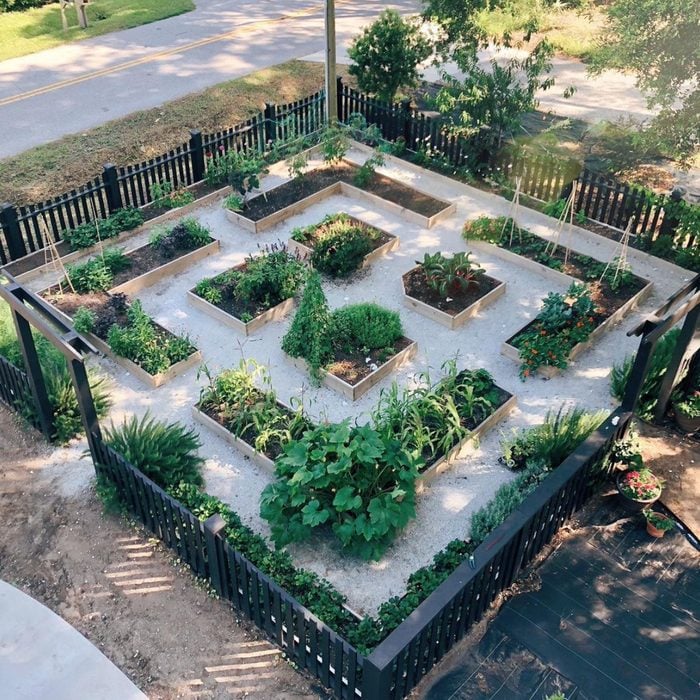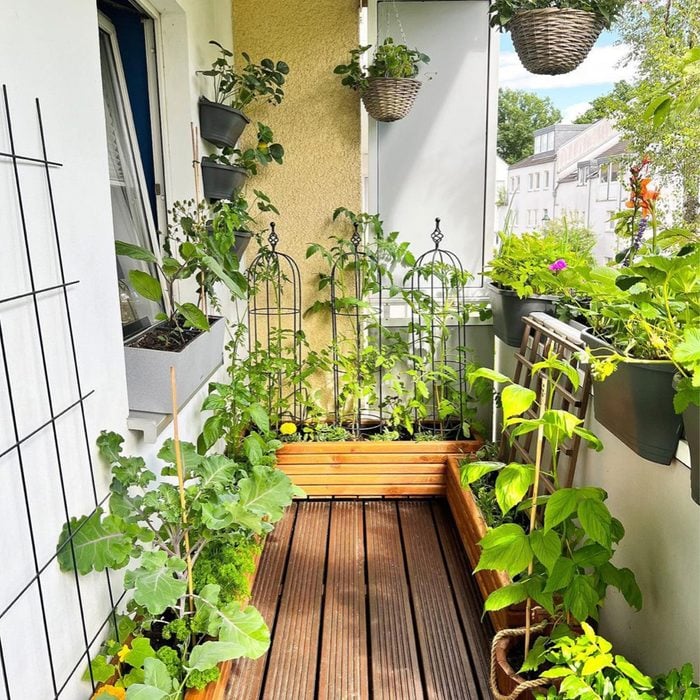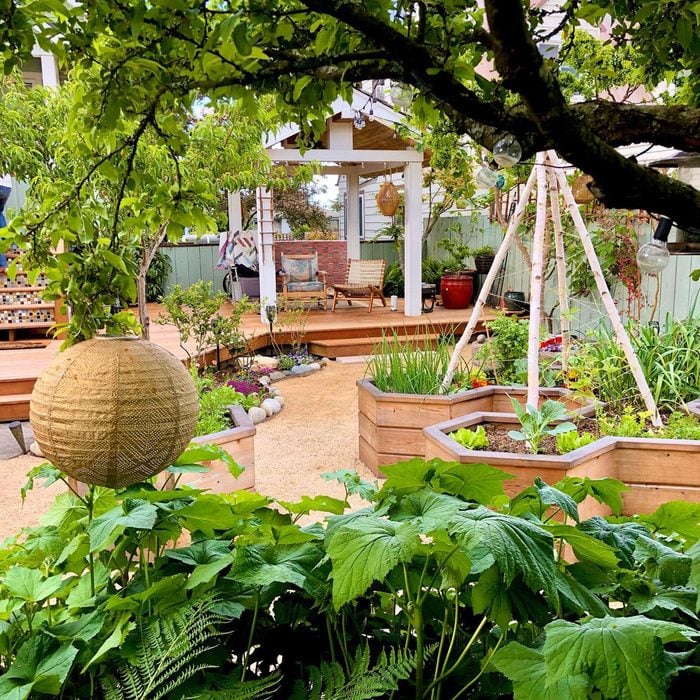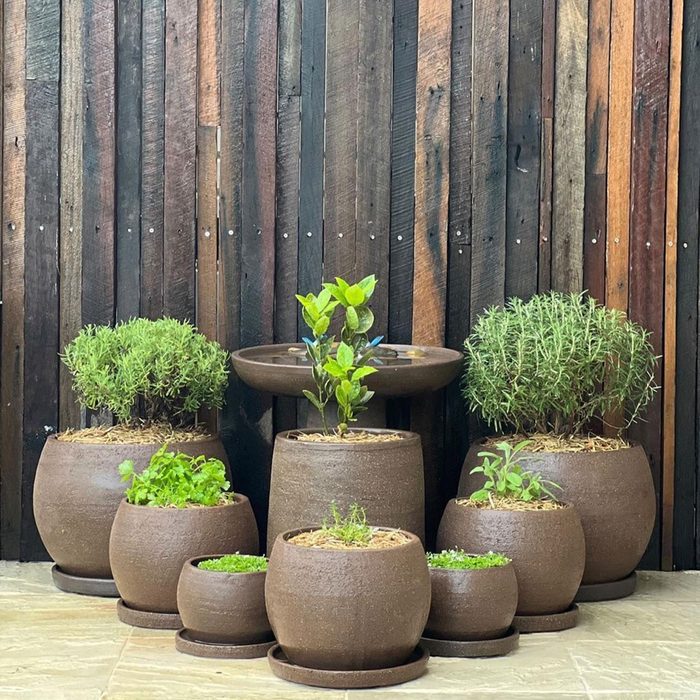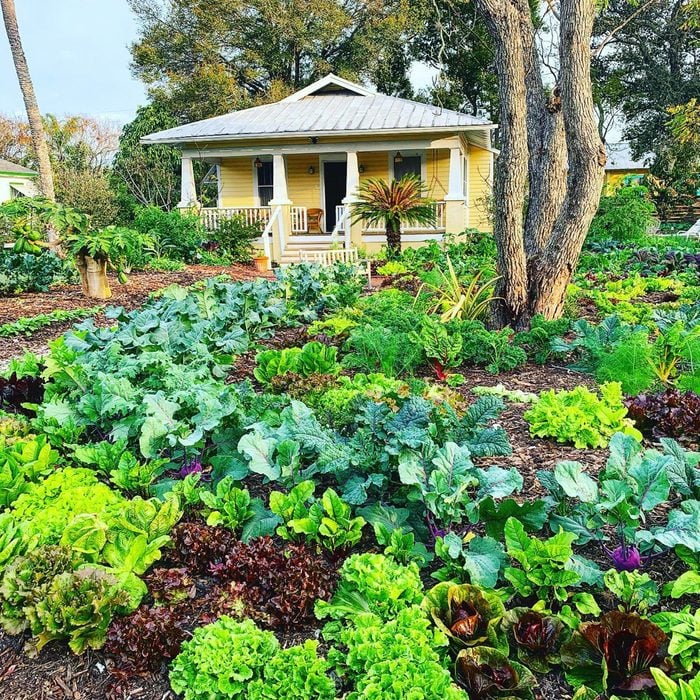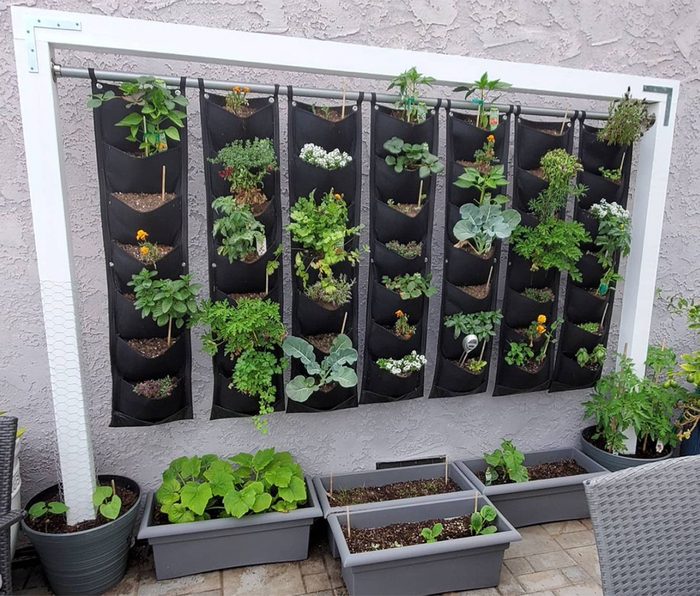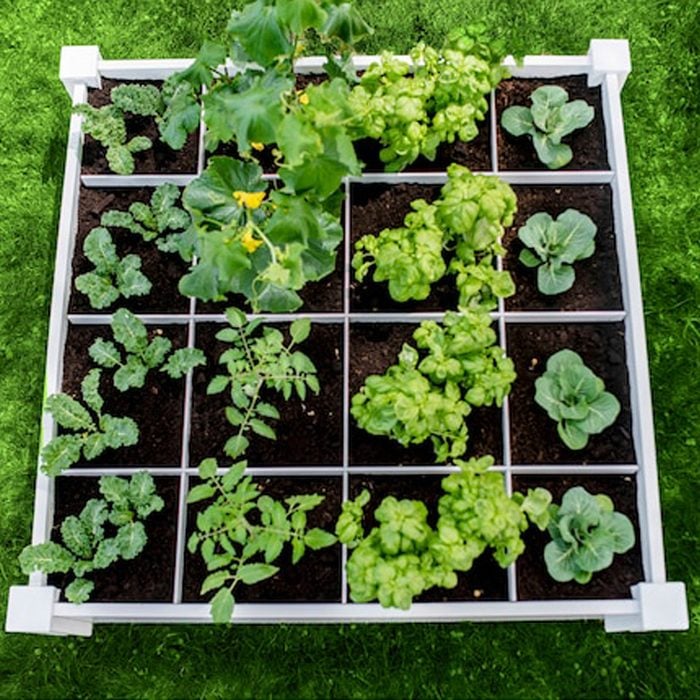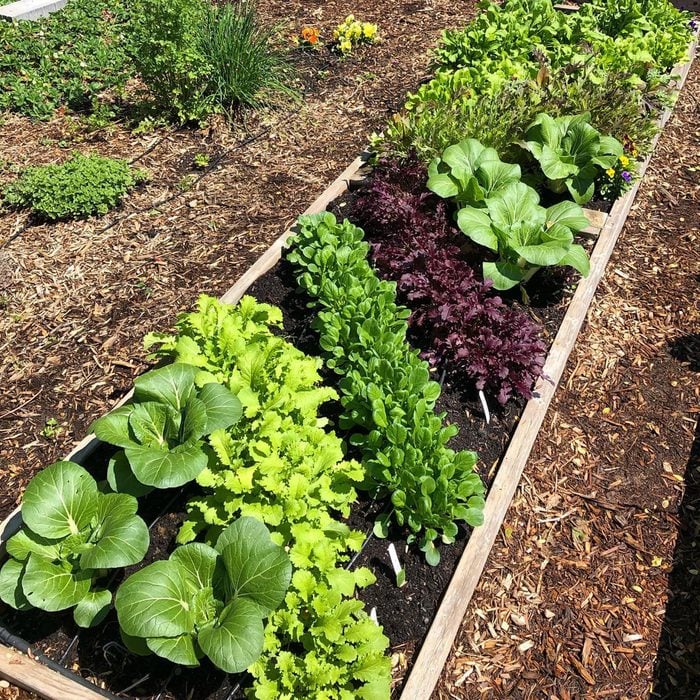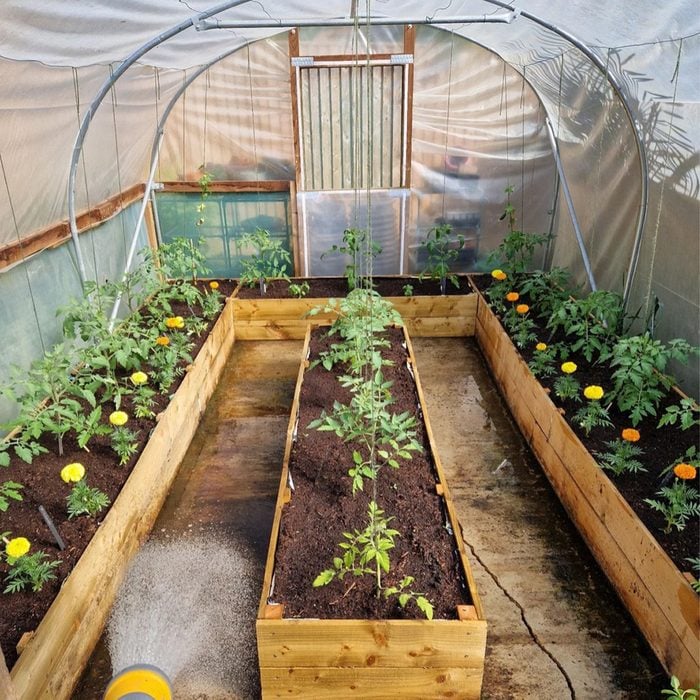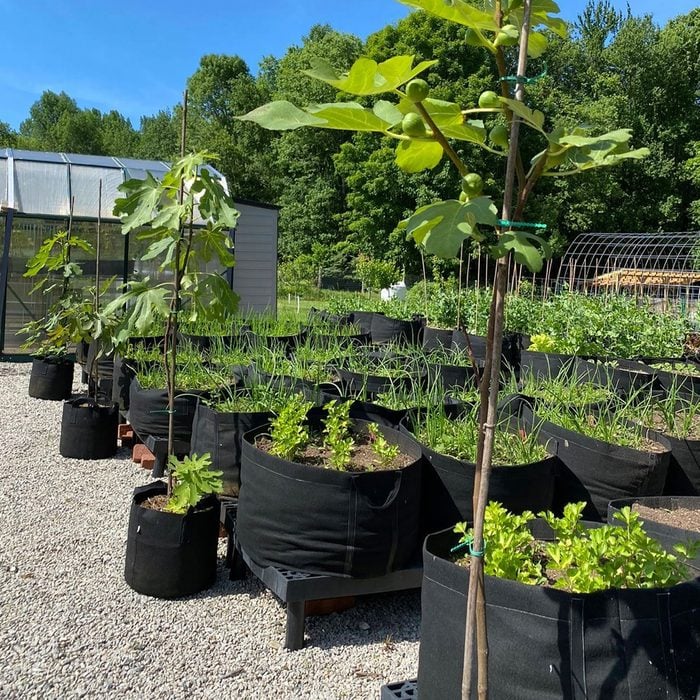Symmetrical Garden Layout
The bird’s eye view of this garden from @kristen.growing shows off all the smart design choices. The wide paths, geometric garden boxes and symmetry were planned out carefully. Kristen says she visualized different configurations and sketched them on graph paper, going through about “15 bajillion designs” before picking the winner!
Balcony Garden Design
Don’t let a small outdoor space stop you from growing your dream garden. Even a tiny balcony has plenty of room for a garden with savvy planning, as seen in this example from @designablehome.
The garden boxes are set up along the perimeter, leaving just enough walking space. They also optimized the vertical space by hanging plants from the ceiling as well as using the window sill, balcony railing and walls.
P.S. Don’t miss out on how and why to keep a garden journal.
Casual Garden Design
When @wild_flowear designed her garden, she wanted it to feel free and playful. So instead of a formal, symmetrical layout, she placed her garden beds and boxes organically throughout the yard.
Rock borders and clear gravel paths keep it from looking messy. The beautiful birch-post trellis in the largest garden box provides a place to grow climbing plants like peas, green beans and cucumbers.
Potted Garden
Of course, not all garden designs fit the mold of a traditional garden. This potted garden by @modern_outdoor_design features a triangular arrangement of matching pottery, each filled with different herbs. (Notice the bird bath peaking out in the back!).
Combined with the backdrop of the recycled wood feature wall, the overall effect of this modern garden is stunning.
Front Yard Garden Design
When picturing a home vegetable garden, you probably automatically imagine it planted in the backyard. But, as proven here by @greendreamstv, a front yard garden is not only possible, but beautiful.
This front yard is packed with lettuce variants and other vegetables in varying colors and textures. The lush layout adds more curb appeal than green grass ever could!
DIY Vertical Garden
No space in the ground? No problem. Plant a vertical garden!
@melaniecollup built this freestanding wood structure to hang fabric pocket planters. Fabric planters are breathable, which helps oxygen reach the roots, encouraging healthy growth. Concrete was poured into large circular pots to anchor the wood posts, then topped with soil for plants with short roots. Check out these other inspirational vertical gardens.
Square-Foot Garden Design
Square foot gardening is a layout technique that helps you utilize every square inch of soil.
Here’s how it works: Divide your garden box into square-foot sections, marking the squares with string, boards or another material. Plant a specific crop within each of the 12-inch squares rather than in rows. This GroGrid gardening box does all the measuring and marking for you with its built-in grid.
Diagonal Rows
Who says vegetable rows have to be straight, parallel lines? Play with pattern and design your garden with diagonal rows, as seen here in this garden box planted by @loveandcarrots.
Make sure neighboring plants are different colors, textures and leaf sizes to get the high-contrast effect seen here. And be sure to leave 12 inches of space between rows so your greens aren’t overcrowded.
Polytunnel Garden
A polytunnel is essentially a semi-circular greenhouse with the steel frame covered by a sheet of polythene, a much more affordable option than glass. Consider a polytunnel in your garden design to extend your growing season into the colder months.
In this setup by @cotswoldpotager, her tomato plants are flourishing. Notice the marigolds that act as companion plants to the tomatoes; their strong smell helps deter white flies and aphids.
Grow Bags
Incorporating grow bags into your garden design can have many benefits. According to the gardening experts at @our.garden.gig, grow bags encourage superior root growth thanks to air pruning. That’s the process where air circulation in the bag naturally prunes the roots.
Plus, grow bags are inexpensive and don’t require any tilling — just add free compost to the top every planting season. They’re also portable and help regulate soil temperatures.

